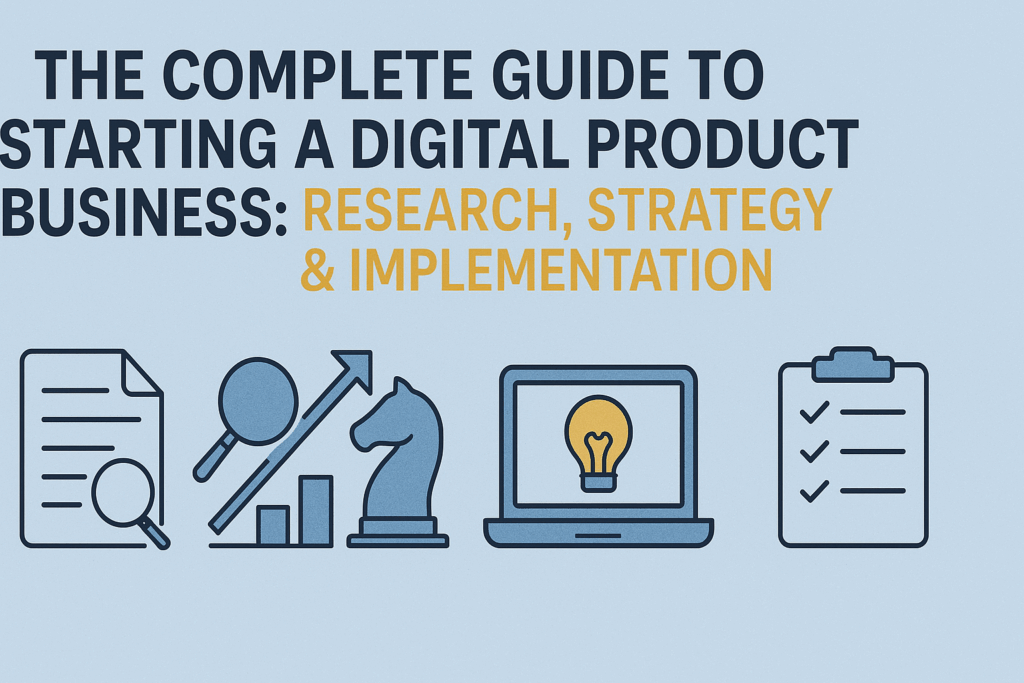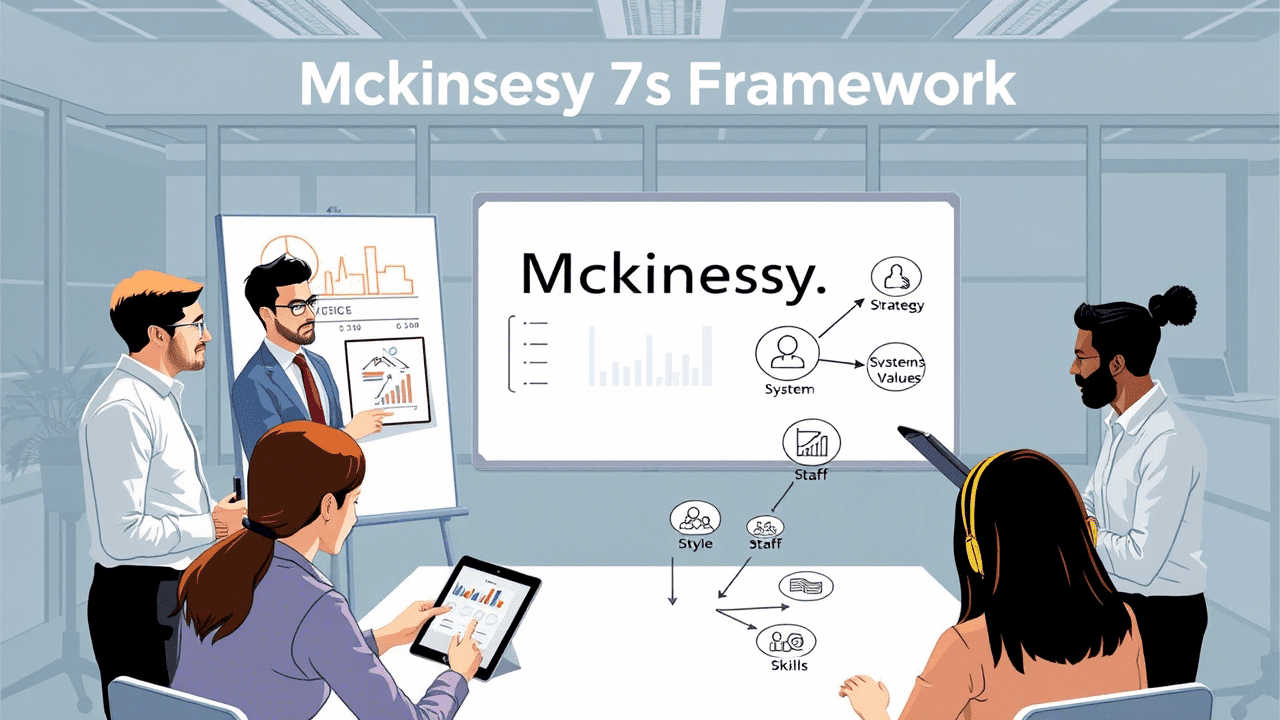Introduction: The Digital Product Opportunity
The digital product marketplace represents one of the most accessible and scalable business models available today. With minimal startup costs, no inventory management, and potential for passive income, digital products offer an attractive entry point for entrepreneurs. This comprehensive guide explores the various digital product opportunities, essential skills, profit maximization strategies, and implementation roadmap.
1. Types of Digital Products to Sell
Educational Products
- Online Courses: In-depth learning experiences on specific topics
- Ebooks & Guides: Comprehensive written content on specialized subjects
- Tutorials & Workshops: Step-by-step instruction on particular skills
- Templates & Frameworks: Ready-to-use systems for specific tasks
- Resource Libraries: Collections of valuable tools and materials
Creative Assets
- Stock Photography: High-quality images for commercial use
- Graphic Design Templates: Pre-designed materials for various purposes
- Fonts & Typography: Custom typefaces for design projects
- Social Media Templates: Ready-made designs for various platforms
- Presentation Templates: Professional slide decks for business use
- Video Assets: B-roll footage, transitions, effects, and templates
Software & Digital Tools
- WordPress Themes & Plugins: Custom solutions for website builders
- Mobile Applications: Utilities, games, or productivity tools
- Scripts & Code Snippets: Programming solutions for specific problems
- Software Extensions: Add-ons for popular platforms
- Automation Tools: Systems that simplify repetitive tasks
Membership & Subscription Products
- Private Communities: Exclusive groups with specialized knowledge
- Content Libraries: Regularly updated collections of valuable resources
- Software as a Service (SaaS): Ongoing access to useful applications
- Coaching Programs: Group mentorship with regular updates
Entertainment Products
- Music & Audio: Original compositions, sound effects, or samples
- Fiction & Creative Writing: Stories, novels, or poetry collections
- Game Assets: Characters, environments, or complete games
Professional Services Packaged as Products
- Consulting Templates: Frameworks used in professional services
- Business Kits: Complete packages for starting specific businesses
- Legal Document Templates: Customizable contracts and agreements
2. Market Research & Validation
Identify Profitable Niches
- Analyze Search Volume: Use tools like Ahrefs, SEMrush, or Google Keyword Planner
- Examine Competition: Study successful products in potential markets
- Find Problems to Solve: Identify pain points in online communities
Research Methods
- Online Communities: Reddit, Facebook Groups, Discord, Quora
- Keyword Research: Determine search volume and competition
- Competitor Analysis: Study successful products and their reviews
- Direct Customer Interviews: Speak with potential customers
- Surveys: Gather quantitative data about market needs
Validation Techniques
- Pre-selling: Offer products before creation to gauge interest
- Landing Page Testing: Create a page to measure conversion rates
- Minimum Viable Product (MVP): Release a basic version to test market response
- Audience Building: Grow an audience first, then create what they want
- Small Batch Testing: Create a limited run to measure response
3. Essential Skills for Digital Product Creators
Technical Skills
- Basic Web Development: HTML, CSS fundamentals
- Content Management Systems: WordPress, Kajabi, Teachable
- Design Software: Canva, Adobe Creative Suite
- Video & Audio Editing: Premiere Pro, Audacity, Camtasia
- Digital Product Platforms: Gumroad, Podia, Shopify
Content Creation Skills
- Copywriting: Creating persuasive marketing text
- Content Organization: Structuring information effectively
- Visual Design: Creating attractive layouts and graphics
- Video Production: Recording and editing high-quality videos
- Audio Production: Recording clear, professional audio
Business Skills
- Marketing & Promotion: Attracting and converting customers
- Market Research: Identifying profitable opportunities
- Pricing Strategy: Determining optimal price points
- Analytics & Measurement: Tracking performance metrics
- Customer Service: Supporting customers effectively
Specialized Skills by Product Type
- Course Creation: Instructional design principles
- Software Development: Programming languages relevant to your product
- Design Assets: Advanced graphic design capabilities
- Writing & Publishing: Editorial skills and publishing formats
4. Platform Selection & Setup
Self-Hosted Options
- WordPress + WooCommerce: Complete control, more technical setup
- Custom Website: Maximum flexibility, highest development requirements
- Shopify: E-commerce focused with digital product capabilities
Dedicated Digital Product Platforms
- Gumroad: Simple setup, all-in-one solution for beginners
- Podia: Comprehensive platform for courses, downloads, and memberships
- Teachable: Specialized for online courses and coaching
- Kajabi: All-in-one business platform with marketing tools
- Payhip: Low fees with customizable checkout
Marketplace Options
- Etsy: Popular for printables and design assets
- Creative Market: Design-focused marketplace
- Udemy: Course-specific platform with built-in audience
- Amazon KDP: E-book publishing platform
- Envato Market: Software, templates, and creative assets
Platform Selection Criteria
- Fees & Commission Structure: Impact on profitability
- Features & Limitations: Alignment with product requirements
- Payment Processing: Available options and geographic restrictions
- Marketing Tools: Built-in promotion capabilities
- Integration Capabilities: Connection to other business tools
- Customer Experience: Ease of purchase and delivery
5. Pricing Strategies for Maximum Profit
Pricing Models
- One-Time Purchase: Simple transaction for permanent access
- Subscription: Recurring payments for ongoing access
- Tiered Pricing: Multiple levels with different features
- Pay-What-You-Want: Customer-determined pricing
- Freemium: Free basic version with premium upgrades
Pricing Psychology
- Value-Based Pricing: Setting prices based on perceived value
- Price Anchoring: Using comparison points to influence perception
- Charm Pricing: Using prices ending in 9 or 7
- Bundle Pricing: Combining products for increased value
- Scarcity & Urgency: Limited time offers or quantities
Profit Maximization Strategies
- Upsells & Cross-sells: Additional offers after initial purchase
- Premium Versions: Enhanced versions at higher price points
- Product Bundles: Collections of complementary products
- Limited-Time Offers: Temporary promotions to drive sales
- Affiliate Programs: Incentivizing others to sell your products
6. Marketing Your Digital Products
Content Marketing
- Blog Posts: Informative articles related to your product
- YouTube Videos: Visual demonstrations and tutorials
- Podcasts: Audio content establishing expertise
- Social Media Content: Platform-specific valuable information
- Lead Magnets: Free resources to build email list
Email Marketing
- List Building: Growing a database of potential customers
- Segmentation: Targeting specific groups with relevant offers
- Automated Sequences: Pre-planned emails for new subscribers
- Launch Campaigns: Promotional sequences for new products
- Retention Emails: Maintaining relationship with customers
Paid Advertising
- Meta Ads: Facebook and Instagram promotion
- Google Ads: Search and display network promotion
- Pinterest Ads: Visual platform for certain niches
- YouTube Ads: Video promotion for relevant audiences
- Retargeting: Following up with interested visitors
Organic Social Growth
- Platform Selection: Focusing on channels with target audience
- Consistent Posting: Regular valuable content
- Community Building: Creating engaged followers
- Collaboration: Working with complementary creators
- Hashtag Strategy: Increasing discoverability
7. Scaling Your Digital Product Business
Product Expansion Strategies
- Product Line Extension: Creating related products
- Different Formats: Repurposing content across mediums
- Premium Offerings: Higher-priced, higher-value products
- Entry-Level Products: Lower-priced options for new customers
- Complementary Products: Items that work with existing offerings
Automation & Systems
- Customer Support Automation: FAQs, chatbots, templates
- Marketing Automation: Scheduled content and emails
- Sales Funnel Automation: Seamless customer journey
- Analytics & Reporting: Automated performance tracking
- Fulfillment Systems: Immediate delivery processes
Team Building & Outsourcing
- Identifying Key Roles: Determining necessary positions
- Freelancer Collaboration: Working with specialists
- Agency Partnerships: Outsourcing marketing or development
- Virtual Assistants: Delegating administrative tasks
- Strategic Hires: Bringing on key team members
8. Legal & Financial Considerations
Intellectual Property Protection
- Copyright Registration: Protecting creative works
- Trademark Considerations: Protecting brand elements
- Terms of Service: Establishing usage guidelines
- License Types: Determining how customers can use products
- Piracy Prevention: Methods to reduce unauthorized sharing
Financial Management
- Accounting Systems: Tracking revenue and expenses
- Tax Obligations: Understanding digital product taxation
- Payment Processing: Managing various payment methods
- Refund Policies: Creating fair return procedures
- Revenue Tracking: Monitoring sales and performance
Business Structure & Compliance
- Business Entity Selection: Choosing appropriate structure
- International Sales Considerations: Global tax implications
- Data Protection Compliance: GDPR and other regulations
- Industry-Specific Requirements: Educational, financial regulations
- Record Keeping: Maintaining necessary documentation
9. Implementation Roadmap
Phase 1: Research & Planning (1-2 Months)
- Conduct market research
- Identify target audience and niche
- Validate product concept
- Develop business plan
- Select platform and tools
Phase 2: Product Development (1-4 Months)
- Create product outline/structure
- Develop initial content
- Design product elements
- Set up delivery infrastructure
- Test functionality and user experience
Phase 3: Pre-Launch (1 Month)
- Create marketing materials
- Set up sales page and checkout process
- Develop launch email sequence
- Build anticipation with target audience
- Recruit potential affiliates or partners
Phase 4: Launch (1-2 Weeks)
- Execute launch communication plan
- Monitor sales and customer feedback
- Address technical issues promptly
- Engage with initial customers
- Collect testimonials and success stories
Phase 5: Post-Launch Growth (Ongoing)
- Analyze performance metrics
- Implement improvements based on feedback
- Develop marketing calendar
- Create content marketing strategy
- Plan future product development
10. Resources & Tools
Learning Resources
- Courses: Digital Product Creation (Podia, Teachable)
- Books: “Launch” by Jeff Walker, “1-Page Marketing Plan” by Allan Dib
- Podcasts: The Smart Passive Income, The Knowledge Business
- YouTube Channels: Income School, Video Creators, Amy Porterfield
- Communities: Digital Product Creators Facebook Group
Essential Tools
- Product Creation: Canva, Adobe Suite, Camtasia, Notion, Google Docs
- Hosting & Delivery: Podia, Teachable, Gumroad, WooCommerce
- Email Marketing: ConvertKit, MailerLite, ActiveCampaign
- Payment Processing: Stripe, PayPal, Paddle
- Analytics: Google Analytics, Hotjar, HubSpot
- Project Management: Trello, Asana, ClickUp, Notion
Skill Development Resources
- Copywriting: Copyblogger, Copy Hackers
- Design: Canva Design School, YouTube tutorials
- Video Production: Think Media, Video Creators
- Digital Marketing: HubSpot Academy, Google Digital Garage
- SEO: Moz Beginners Guide, Ahrefs Blog
Conclusion: Your Digital Product Journey
Creating and selling digital products offers exceptional potential for creative expression, impact, and income. By strategically selecting the right product type, developing essential skills, and implementing effective marketing strategies, you can build a sustainable and profitable digital product business.
Remember that success in the digital product space typically requires patience, persistence, and continuous improvement. Start with a focused, high-quality offering that solves a genuine problem for your target audience, then expand based on customer feedback and market response.
The most successful digital product creators combine deep subject matter expertise with effective marketing and authentic audience connection. Focus on creating genuine value, and the profit will follow.
Ready to begin your digital product journey? Start with thorough market research, select one product type that aligns with your skills and audience needs, and take action on the implementation roadmap outlined above.





